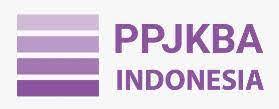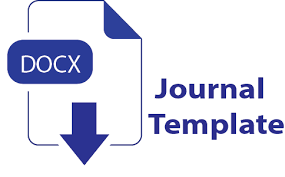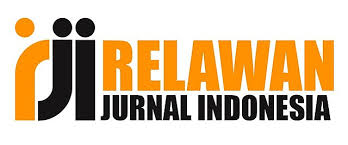Textbook-Driven Oral Proficiency: Assessing Auto Drill Ngomong Arab Sehari-Hari
DOI:
https://doi.org/10.58223/al-irfan.v8i1.431Keywords:
Arabic Textbook, Texbook Application, Maharah al Kalam, Effectiveness, Auto Drill TextbookAbstract
The development of speaking skills (maharah al-kalam) in Arabic is a crucial component of effective communication and successful language acquisition. However, in many educational settings, including SMP Islam Az-Zahra 2 Poligon Palembang, traditional instructional approaches have limited students’ opportunities to actively practice speaking, relying heavily on grammar-translation methods. This study aims to evaluate the implementation and effectiveness of the Auto Drill Ngomong Arab Sehari-Hari textbook in enhancing students’ Arabic speaking skills. Specifically, the study addresses three key objectives: (1) to assess the state of Arabic language instruction prior to the textbook’s implementation, (2) to examine the changes in teaching and learning practices following its adoption, and (3) to measure the effectiveness of the textbook in improving students’ speaking proficiency. The research adopts a mixed-methods approach, combining qualitative data from classroom observations, teacher and student interviews, and document analysis with quantitative data from pre-test and post-test scores. Findings indicate a notable shift toward more interactive and student-centered learning after the textbook's introduction. Quantitatively, students' average speaking performance improved by 29.57 points, indicating a substantial enhancement in their oral proficiency. This study concludes that the Auto Drill Ngomong Arab Sehari-Hari textbook is an effective and practical tool for developing maharah al-kalam, especially in secondary-level Arabic instruction. Its structured, context-based drills provide learners with meaningful opportunities for practice, ultimately contributing to improved communicative competence. These findings have implications for curriculum development, suggesting that targeted drill-based resources can significantly improve language learning outcomes.
References
Darong, H. C., & Niman, E. M. (2025). The Intersection of Psycholinguistics and Systemic Functional Linguistics in Textbooks. PSYCHOLINGUISTICS, 37(2), Article 2. https://doi.org/10.31470/2309-1797-2025-37-2-96-110
De Jong, N., & Perfetti, C. A. (2011). Fluency Training in the ESL Classroom: An Experimental Study of Fluency Development and Proceduralization. Language Learning, 61(2), 533–568. https://doi.org/10.1111/j.1467-9922.2010.00620.x
Glenn, E. C. (1972). Role‐playing in the fundamentals of speech course. The Speech Teacher, 21(4), 321–325. https://doi.org/10.1080/03634527209377972
Hady, Y. (2019). Pembelajaran Mahārat al-Kalām Menurut Rusdy Ahmad Thu’aimah dan Mahmud Kamil al-Nâqah. Al Mahāra: Jurnal Pendidikan Bahasa Arab, 5(1), Article 1. https://doi.org/10.14421/almahara.2019.051-04
Hanh, N. T. (2020). Silence is Gold?: A Study on Students’ Silence in EFL Classrooms. International Journal of Higher Education, 9(4), Article 4. https://doi.org/10.5430/ijhe.v9n4p153
Hidayah, N., Mukmin, M., & Rahma, M. (2021). Kecerdasan Dan Kepribadian Siswa di SMP IT Fathona Palembang Dan Pengaruhnya Terhadap Kemampuan Berbicara. Taqdir, 7(1), 115–130. https://doi.org/10.19109/taqdir.v7i1.8455
Imron, K., Irmansyah, I., Nurhusna, N., Maimunah, I., & Hajib, Z. A. (2023). A New Model of Kalam Material Through Cybernetic Approach: Development Stages and The Influence Towards Speaking Skill of Students. Jurnal Al Bayan: Jurnal Jurusan Pendidikan Bahasa Arab, 15(1), 207–223. https://doi.org/10.24042/albayan.v15i1.16199
Kloepper, L. (2017). Collaboration, not oration: Tips for engaging students and promoting active learning in large classrooms. The Journal of the Acoustical Society of America, 141(5_Supplement), 4018–4019. https://doi.org/10.1121/1.4989243
Kos, T. (2025). Enhancing Young Learners’ Peer Collaboration: Pedagogical Ideas for Language Teachers. TESOL Quarterly, 59(1), 541–551. https://doi.org/10.1002/tesq.3344
Ky Nhan, L. (2024). Exploring Students’ Perceptions of Role-Playing Activities in Boosting English Speaking Confidence. International Journal of Innovative Science and Research Technology (IJISRT), 825–835. https://doi.org/10.38124/ijisrt/IJISRT24OCT708
Mahmudi, I., Maha, M. B., Lubis, Z., Silmy, A. N., & Zalzuli, A. (2023). The Effectiveness of Al-MuhÄdastah Textbook to Improve Arabic Speaking Skills. Arabiyatuna: Jurnal Bahasa Arab, 7(2 November), Article 2 November. https://doi.org/10.29240/jba.v7i2.7088
Mukmin, M., & Susanti, I. (2016). AL-‘ALÂQAH BAYNA KAFÂAH AL-TALÂMIDZ FÎ AL-NAHW WA MAHÂRATIHIM FÎ AL-KALAM BIL-MADRASAH AL-TSÂNAWIYYAH AL-HUKÛMIYYAH 2 PALEMBANG. Taqdir, 2(2). https://alumni.radenfatah.ac.id/index.php/Taqdir/article/view/1705
Nguyen, B. H., Jang, S. H., & Yang, Y. (2010). Coping with Low-motivation: Building the Fire for Students. The International Journal of Learning: Annual Review, 17(8), 345–354. https://doi.org/10.18848/1447-9494/CGP/v17i08/47174
Pawlak, M. (2016). Investigating Language Learning Motivation from an Ideal Language-Self Perspective: The Case of English Majors in Poland. In D. Gałajda, P. Zakrajewski, & M. Pawlak (Eds.), Researching Second Language Learning and Teaching from a Psycholinguistic Perspective: Studies in Honour of Danuta Gabryś-Barker (pp. 53–69). Springer International Publishing. https://doi.org/10.1007/978-3-319-31954-4_5
Poehner, M. E., & Leontjev, D. (2023). Peer interaction, mediation, and a view of teachers as creators of learner L2 development. International Journal of Applied Linguistics, 33(1), 18–32. https://doi.org/10.1111/ijal.12444
Rajendran, M., Srinivasan, V., Ilangovan, A., Singh, A. B., & Bakhromdjanovna, M. Z. (2025). Exploring anxiety among english learners: A comprehensive literature review. Multidisciplinary Reviews, 8(9), 2025270–2025270. https://doi.org/10.31893/multirev.2025270
Richards, J. C. (1985). Conversational Competence through Role Play Activities. RELC Journal, 16(1), 82–91. https://doi.org/10.1177/003368828501600107
Rohayati, E., Wasilah, W., & Rahmadewi, S. (2024). Pembelajaran Shorof menggunakan Buku Al-Maqsud dengan Metode Istiqraiyyah. Tapis : Jurnal Penelitian Ilmiah, 8(1), Article 1. https://doi.org/10.32332/tapis.v8i1.8406
Sato, R. (2024). Exploring the silence of Japanese EFL learners: Its relationship with the degree of willingness to communicate (WTC). Language Teaching Research, 13621688241291932. https://doi.org/10.1177/13621688241291932
Shadiev, R., Liu, J., & Cheng, P.-Y. (2023). The Impact of Mobile-Assisted Social Language Learning Activities on Speaking Skills and Self-Efficacy Development. IEEE Transactions on Learning Technologies, 16(5), 664–679. https://doi.org/10.1109/TLT.2023.3243721
SHAPIRO, S. S., & WILK, M. B. (1965). An analysis of variance test for normality (complete samples)†. Biometrika, 52(3–4), 591–611. https://doi.org/10.1093/biomet/52.3-4.591
Sunarko, A., Muna, W. L. C., Alawiyah, L., Rosikh, F., Umam, K., & Zahra, A. (2023). ANALISIS BUKU AUTO DRILL NGOMONG ARAB KARYA JAMALUDDIN SHIDDIQ, M.Pd. DAN RIZKA ELIYANA MASLIHAH, M.Pd.I. (TINJAUAN KELAYAKAN ISI, BAHASA, DAN GRAFIKA). Al Jabiri: Jurnal Ilmiah Studi Islam, 2(1), Article 1. https://doi.org/10.53866/aljabiri.v2i1.543
Thompson, M. (2015). Is your ‘homogeneity test’ really useful? Analytical Methods, 7(4), 1627–1629. https://doi.org/10.1039/C4AY02762K
Washington-Nortey, P.-M., Zhang, F., Xu, Y., Ruiz, A. B., Chen, C.-C., & Spence, C. (2022). The Impact of Peer Interactions on Language Development Among Preschool English Language Learners: A Systematic Review. Early Childhood Education Journal, 50(1), 49–59. https://doi.org/10.1007/s10643-020-01126-5
Wasilah, Nazarmanto, Utami, S. T., & Hidayah, N. (2024). COOPERATIVE LEARNING IN ARABIC WRITING SKILL WITH MEDIA CHAIN WORD FLAG. Proceeding International Conference on Islam and Education (ICONIE), 3(1), Article 1.
Yasin, A., Maha, M. B., Fahrurrozi, Zarkasyi, A. H., Fauziah, S. A. B. N., & Zalzuli, A. (2023). Development of the “Al-muhdastah Al-yaumiyyah” Textbook to Improve Arabic Speaking Skills at an Islamic Boarding School. Izdihar : Journal of Arabic Language Teaching, Linguistics, and Literature, 6(2), Article 2. https://doi.org/10.22219/jiz.v6i2.22695
Yoshimura, Y., & MacWhinney, B. (2007). The effect of oral repetition on L2 speech fluency: An experimental tool and language tutor. 25–28. https://doi.org/10.21437/SLaTE.2007-5
Zulhannan, Kesuma, G. C., Musyarrofah, U., & Andriansyah, Y. (2025). Enhancing Communicative Arabic Teaching: Evaluating the Al-Arabiyah Baina Yadaik Model. Journal of Educational and Social Research, 15(3), Article 3. https://doi.org/10.36941/jesr-2025-0100
Downloads
Published
How to Cite
Issue
Section
License
Copyright (c) 2025 Dhia Kurniani, Nurul Hidayah, Jamanuddin

This work is licensed under a Creative Commons Attribution 4.0 International License.
Lisensi :
Al-Irfan: Journal of Arabic Literature and Islamic Studies is published under conditions Creative Commons Attribution 4.0 International License / CC BY 4.0 This license permits anyone to copy and redistribute this material in any form or format, modify, modify, and make derivative works of this material for any purpose, including commercial purposes, so long as they credit the author for the original work.











